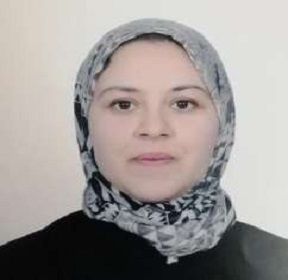Speakers
Khem Raj Meena
Dr. Rajendra Prasad Central Agricultural University IndiaTitle: Conversion of agriwaste into wealth via mushroom cultivation
Abstract:
India produces about 98 million tons of surplus agro wastes per annum. India has the potential to produce about 5 million tons (Mt) of fresh mushrooms merely by using 10% of the surplus agro waste burnt in the country every year. Improper management of these waste(s) is a big problem which causes pollution in the environment causes different diseases. Hence, there is always a high urging demand of discovering an agricultural waste management system/ method which is cost effective and contribute less in environment pollution with a valuable product. Mushroom cultivation by using these agiwastes is a good approach to remove environmental pollution caused by incineration of these waste and to provide the mushroom to eat for the marginalized section in India to solve the malnutrition problem of child(s). Mushroom is a valuable dietary supplement of protein and other nutritional components like vitamins, minerals, carbohydrate, fats and has medicinal properties. Mushroom production approach can play an important role in contributing to the better livelihood in rural & peri- urban area(s) of the country through food security, food safety, and income and employment generation to the unemployed youth. Its cultivation play an important role in agriculture waste management followed by employment generation to the youth(s) of the county. The mushroom cultivation related activities like mushroom cultivation, spawn mushroom production, compost preparation, processing, packaging, product development and marketing and skill development in Bihar performed whole year. Five mushroom genera like Pleurotus (Dhingri mushroom), Agaricus (Button mushroom), Calocybe (Milky mushroom) and Volvariella (Paddy mushroom) are commercially cultivated in different parts of India. Beside employment and income generation, poor families are taking mushroom in their diet regularly which will help to remove the malnutrition problem from children of Bihar in India.
Biography:
Khem Raj Meena is an Assistant Professor at Advance Centre of Mushroom Research, Department of Microbiology, Dr. Rajendra Prasad Central Agricultural University, Pusa, Samastipur, Bihar (India). He has two and half years teaching and research experience in the University. He has also involved in the different research projects at University level and presented work at globally. He published ~15 research articles, 2 book chapter and attended many workshop and conferences in India. He belong from a small village of Rajasthan in India and is passionate about teaching and research.
R Rajakumari
Mahatma Gandhi University IndiaTitle: Nano formulated proanthocyanidins as an effective wound healing component
Abstract:
Proanthocyanidins (PCs), a component of grape seed extract (GSE), has recently being used for the treatment of wounds. Proanthocyanidins, the principal component of GSE, has recently been identified as a main mediator of GSE medicinal properties. We present here an approach for manufacturing PCs/soluplus (SOLU) blended nanodispersion prepared by freeze drying technique to adequately enhance the stability and bioavailability of the PCs for wound repair. The PCs/SOLU nanodispersion (0.5, and 1.5 g) was incorporated into 10 g of a simple ointment base by melting and trituration to give two batches of the ointment formulation which could be easily applied topically to wounds. Excision wound measuring about 3 cm in depth was created on the Wistar rats placed in groups (n = 6) and the ointment applied topically on the wounded area which was measured daily until epithelialization and complete wound closure. Grape seed extract ointment and Povidone-iodine ointment (1 %) served as the control and standard treatments, respectively. PCs heals the wound by mobilising the fibroblasts in the wound site and inhibits the inflammatory response through decreased expression of monocyte. Immunological, macroscopical and histological evaluations have shown that the use of ointment containing PCs/SOLU nanodispersion enhances the cell adhesion and migration.
Key Words: Proanthocyanidins, Soluplus, Nanodispersion, Ointment, Wound healing
Biography:
R Rajakumari is a Surgeon in the Laboratory of Mycology, Biotechnology and Microbial activity (LaMyBAM). Did her Phd in the Department of Applied Biology, University of Mentouri Brothers, Constantine- Algeria. She is a Professor of Applied Microbiology Lab, Interfaculty School of Bioengineers (EIB), 3CELABOR research center, Herve, Belgium.
Alazar Essayas
Wollo University,Dessie EthiopiaTitle: Probiotic properties analysis of isolated lactic acid bacteria from milk
Abstract:
Lactic acid bacteria (LAB) are essential ingredients in probiotic foods, intestinal microflora, and dairy products that are capable of coping up with harsh gastrointestinal tract conditions and are available in a variety of environments. The objective of this study is to evaluate the probiotic property of LAB isolated from bovine milk. Milk samples were collected from local dairy farms. Samples were obtained using sterile test tubes and transported to a laboratory in the icebox for further biochemical characterization. Preliminary Physiological and biochemical identification of LAB isolates was conducted by growing on MRS agar after ten-fold serial dilution. Seven of the best isolates were selected for the evaluation of the probiotic property. The LAB isolates were checked for resistance to antibiotics and their antimicrobial activity by disc diffusion assay and agar well diffusion assay respectively. Bile salt hydrolase activity of isolates were studied by growing isolates in BSH medium with bile salt. Cell surface property of isolates was assayed by studying their autoaggregation and coaggregation percentage with S. aerues. All isolates were found BSH positive. In addition, BCM2 and BGM1 were susceptible to all antibiotic disks except BBM1 which was resistant to all antibiotic disks. BCM1 and BGM1 had the highest autoaggregation and coaggregation potential respectively. Since all LAB isolates showed gastro intestinal tolerance and good cell surface property they could be considered as good potential probiotic candidates for treatment and probiotic starter culture preparation.
Biography:
Alazar Essayas – Ph.D Scholar, Department Science and Technology ,Sharda University Greater Noida(U.P). Lecturer ,Wollo University,Dessie ,Ethiopia. Profesor Clínico Asociado, Escuela Odontología, Pontificia Universidad Católica de Chile Autora de capítulos de libros y publicaciones científicas nacionales e internacionales en el área de cariología..
Anna Samoilova
St. Petersburg Pasteur Institute Russian FederationTitle: Phenotypical and genotypical assessment of resistance of klebsiella pneumoniae strains producing carbapenemase
Abstract:
The global emergence and spread of antimicrobial resistance genes, such as extended spectrum beta-lactamase (ESBL) and carbapenemase genes in Klebsiella pneumoniae strains, pose a significant public health threat. This is because carbapenems are considered the latest therapeutic agent used to treat diseases caused by multidrug-resistant gram-negative bacteria. The detection of carbapenemases is epidemiologically important because they are plasmid-mediated and can be transmitted horizontally between different bacterial species.
The purpose of the work is to assess the spectrum of antibiotic resistance of carbapenemase-producing strains of K. pneumoniae circulating in hospitals in St. Petersburg using phenotypic and genotypic methods.
An assessment of the sensitivity of 182 K. pneumoniae strains isolated from samples of patients admitted to hospitals in St. Petersburg in to 18 antimicrobial drugs was carried out. Resistance to antibiotics was assessed by the disk diffusion method. Carbapenemase genes were detected by molecular genetic (PCR) and phenotypic (CIM) methods.
Most of the strains were resistant to ticarcillin / clavulanate, as well as quinolones, third and fourth generation cephalosporins, netilmicin, and gentamicin. The investigated microorganisms showed a moderate percentage of resistance to amikacin, meropenem and imipenem. The main type of carbapenemases produced by K. pneumoniae strains were metallo-beta-lactamases of the NDM group (60.4%) and serine carbapenemases of the OXA-48 group (49.5%). In the course of the study, a serine carbapenemase of the GES type was found in one strain. Carbapenemases of the KPC group were found in only 1.1% of the tested strains.
The results of the study demonstrate a high level of resistance of K. pneumoniae nosocomial isolates to various antimicrobial drugs. In this regard, the range of antibiotics for the treatment of Klebsiella spp. infections is significantly reduced, which can lead to a decrease in the effectiveness of clinical therapy.
Biography:
Samoilova A. is a junior researcher of Department of New Technologies. Research interests are antibiotic resistance and virulence of K. pneumoniae strains, as well as the development of kits for determining the antibiotic susceptibility of bacteria. The results of scientific activities have been published in the form of articles in peer-reviewed journals.
Huda Z Al-Shami
Sana'a University YemenTitle: Antibiotic resistance patterns of pathogens isolated from clinical specimens in Sana'a Capital City: a one year retrospective study from 2019 to2020
Abstract:
Background :Antimicrobial resistance(AMR) is one of the most a serious global public health threats and the major clinical microbiological problem affecting the hospitalized and non-hospitalized patients throughout the world and is particularly affecting developing countries including Yemen, where infectious diseases and poverty are endemic and no legislation for antimicrobial uses. The effectiveness of currently available antimicrobials is decreasing as a result of increasing resistant strains among clinical isolates. Information on the type of common circulating pathogens with their AMR patterns in a given area is essential for optimal patient care.
Objectives The aim of this study was to determine the resistance pattern of bacterial and fungal isolates from different clinical specimens at one major hospital and two laboratories( one governing and another privet) in the in Sana'a Capital City.
Methods: A retrospective study was conducted in one major hospital laboratory and two laboratories (one governing and another privet) in the Sana'a Capital City from January 2019 to January 2020. All culture and antimicrobial susceptibility test by disc diffusion method results of patients who presented at each of the laboratories for Urine , pus from( deep and surface wounds) Urogenital ( Urethral discharge, HVS, Seminal fluid , vaginal and cervical swabs),),(Ear, Nasal ,throat &mouth swabs) ,CSF, Body fluids and stool . Data were analyzed using SPSS Windows version 20.0. The comparisons between different isolates’ resistance to antimicrobials were performed using the chi-square test.
Karai Oumaima
Sidi Mohammed Ben Abdellah University MoroccoTitle: Capturing Biological activity in new heterocyclic carboxylic ?,?-diaminoesters by Chemical synthesis
Abstract:
Amino acid derivatives are an important group of peptidomimetics. They exhibit several applications in medicinal chemistry. The amino acids were used as starting keys for synthesis peptides, are known to contribute to various chemotherapeutic effects, as antileukemic, antitumor, antimicrobial, and antiviral agents. Heterocyclic α-amino acids frameworks constitute an essential pharmacophore in many naturally occurring and biologically active agents. In continuation of our ongoing research, this work deals to describe the synthesis and design of carboxylic α,α-diaminoesters through N- alkylation of methyl α-azido glycinate N-benzoylated by different functionalized amines. The structure of the title compound was determined by usual spectroscopic techniques, such as NMR, MS, elemental analysis and corroborated by X-ray crystallography.
In this study, we used the modified resazurin microtiter plate assay it is a dye used as an oxidation-reduction indicator in bacterial cell viability assays to evaluate the antimicrobial activity of synthesized products. The results from the disc diffusion assay indicated that the tested compound showed important antibacterial activity against Gram-positive bacteria (IZ 08) and Gram-negative bacteria (IZ 08-10).
Biography:
Oumaima Karai was born in Fez, Morocco, in 1990. She obtained her Bachelor’s and master’s degree in chemistry at Sidi Mohammed Ben Abdellah University Faculty of Sciences and technologies, Fez, Morocco, in 2011 and 2013. she is a doctor in organic chemistry since 2020 from Sidi Mohammed Ben Abdellah University Faculty of Sciences Dhar El Mahraz, Fez, Morocco. Her research interests include Synthesis and spectroscopic study of new compounds derived from heterocyclic and non- heterocyclic carboxylic α,α-diamino-diesters, and on the study of their biological and antioxydant activities. Her research has been the subject of several publications (indexed journals, and conferences).
Rudra Suresh
Rudra SureshUniversity of Wrocaw PolandTitle: The newly identified proteins involved in the chromosome segregation in Mycobacteria- the functional analysis
Abstract:
Chromosome segregation in bacteria is an active process involving a number of proteins. In most of the bacteria, it depends on the presence of ParABS system. ParB segregation protein binds to the parS sequence and forms segregation complexes. ParA segregation protein interacts with ParB complexes being responsible for their distribution
ParA homologs: C. cresentus MipZ, C. glutamicum PldP, MipZ exhibited nonspecific DNA binding activity similar to ParA-like proteins.
Characteristic Features of Mycobacteria: Rod shaped, Slow growing, Gram positive bacteria with high ( G + C ) content (61 - 71% ), Lipid rich cell wall, Resistant to many environmental factors: drying, high and low temperature, high and low pH
Unique chromosome organisation and segregation in Mycobacteria: Chromosome is positioned asymmetrically in M. smegmatis cells. oriC is in the off-centre position after oriC duplication, new pole segrosome migrates faster than old pole segrosome mycobacterial cell elongate asymmetrically – the old pole extends faster
ParA in M. smegmatis
ParA is responsible for the localisation of the ParB complexes in the cell
● parA deletion strain is characterized by slow growth ● parA deletion results in formation 30% of anucleate cells
Biography:
Rudra Suresh is a Medical biotechnology engineering graduate with a record of outstanding research skills, comprehensive knowledge of food standards regulations and operational dexterity in fast-paced laboratory environment. She is looking for a position in which I can make the best use of my scientific background and my creativity in order to develop innovative products, and solutions. She is interested in all aspects of the biotechnology industry from R&D to QC. She really would like to find a role in which she can constantly learn new skills and increase her knowledge.







